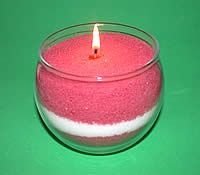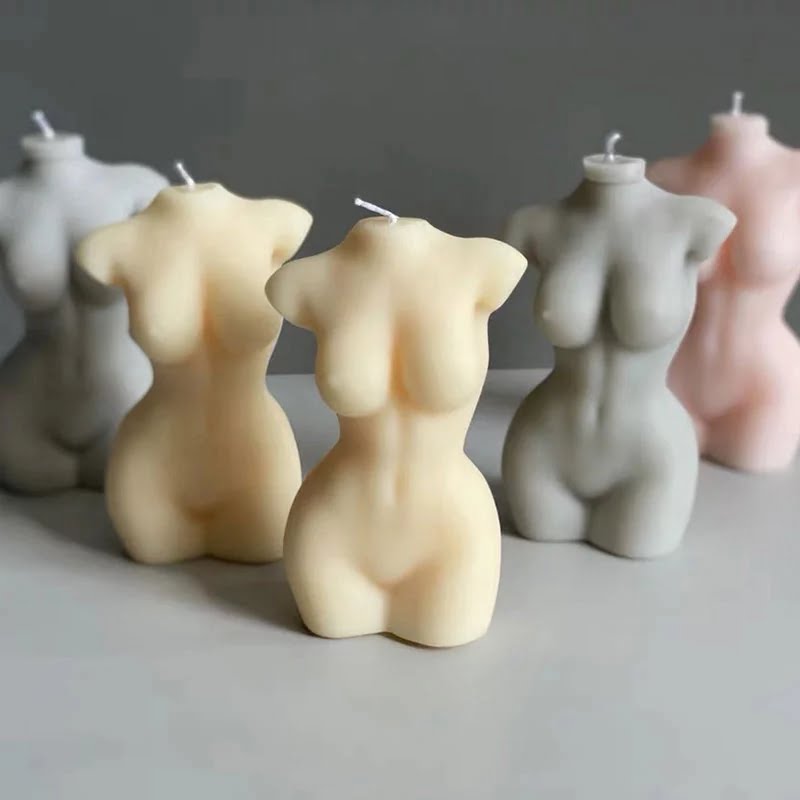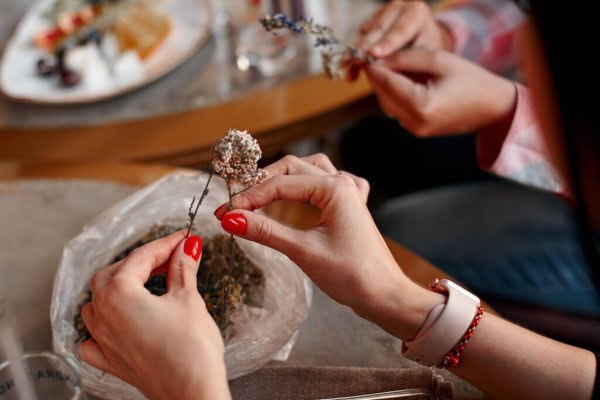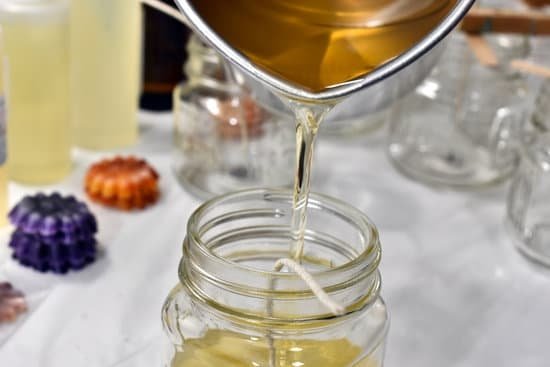Candle making, a centuries-old craft, has experienced a surge in popularity in recent years. The allure of creating beautiful, fragrant candles at home has captivated the minds and hearts of many individuals looking for a creative outlet. But how much does candle making actually cost? In this article, we will delve into the world of candle making and explore the various factors that contribute to its overall cost.
The art of candle making dates back thousands of years, with early civilizations using candles for both practical and symbolic purposes. Today, however, candle making has evolved into a beloved hobby that allows individuals to express their creativity while filling their homes with unique scents and warm ambiance.
With the rise of artisanal products and sustainable living practices, homemade candles have become increasingly sought after. People are drawn to the idea of crafting their own personalized candles that not only serve as decorative pieces but also create a cozy atmosphere in any space. This growing demand for homemade candles has led many to wonder about the cost involved in starting this rewarding hobby.
In this comprehensive guide, we will explore all aspects of candle making costs. From essential supplies like molds and waxes to additives such as fragrances and colorants, we will delve into each component that contributes to the overall expense. Additionally, we will discuss various wax options available in the market and examine how they can impact both the quality of your finished product and your budget.
By delving into these topics and more, we aim to provide you with a clear understanding of the costs associated with candle making. Whether you are considering embarking on this creative journey as a hobby or starting your own candle-making business, having a thorough knowledge of expenses will enable you to make informed decisions.
So join us as we uncover the world of candle making costs and discover why this fulfilling art form may be more affordable than you think.
The Essential Candle Making Supplies
Candle making requires a few essential supplies to ensure a successful and safe process. These supplies are crucial in creating candles that burn evenly, have a longer burn time, and maintain their shape and fragrance. Here is a list of the key tools and materials needed for candle making:
- Wax: The primary ingredient in candles, wax can be purchased in various forms such as flakes, blocks, or beads. The type of wax you choose will depend on your preference and the desired characteristics of your candles. Popular options include soy wax, beeswax, and paraffin wax.
- Wicks: Wicks are responsible for providing the necessary fuel for the flame to burn. It’s important to select the right wick size based on the diameter of your candle container or mold. A wick that is too small may not create a sufficient flame, while a wick that is too large could cause uneven burning or excessive smoke.
- Containers or Molds: Candle containers or molds hold the melted wax as it solidifies into a candle shape. They come in various sizes and materials such as glass jars, tins, silicone molds, or metal molds. Consider the type of candle you want to make when selecting a container or mold.
- Heat Source: To melt the wax, you’ll need a heat source such as a double boiler or a melting pot specifically designed for candle making. It’s important to use equipment specifically meant for candle making to ensure safety and proper temperature control.
- Thermometer: Keeping track of the temperature while melting wax is essential for achieving optimal results. A thermometer that can measure high temperatures accurately will help prevent overheating or underheating of your wax.
- Essential oils or Fragrance Oils: Adding fragrances enhances the appeal of your candles and creates unique scents that can set your candles apart from store-bought ones. Essential oils or fragrance oils can be added to the melted wax to achieve your desired scent.
- Colorants: If you want to add color to your candles, colorants can be used. These can come in the form of liquid dyes, wax dye chips, or powdered pigments. Choose colorants that are specifically designed for candle making to ensure they are safe and will not affect the quality of your candles.
| Supply | Average Cost |
|---|---|
| Wax | $10 – $30 per pound |
| Wicks | $0.10 – $0.50 per wick |
| Containers or Molds | $2 – $10 each |
| Heat Source | $15 – $50+ |
Please note that these prices are approximate and can vary depending on factors such as brand, quantity purchased, and location. Additionally, keep in mind that the cost of essential oils, fragrance oils, and colorants will vary based on the specific scents and colors chosen.
Choosing the Perfect Wax for Your Candles
When it comes to candle making, one of the most important decisions you will have to make is choosing the right wax for your candles. The type of wax you choose can greatly impact the quality and performance of your candles, as well as the overall cost of your candle making endeavor.
There are various types of waxes available in the market, each with its own unique characteristics and cost differences. One popular option is soy wax, which is known for its clean-burning qualities and ability to hold fragrance well. Soy wax is often a favorite among candle makers due to its natural origins and low-cost compared to other types of wax such as beeswax or paraffin.
Beeswax, on the other hand, is considered a premium choice for candles due to its elegant appearance and sweet honey scent. However, beeswax can be more expensive than other options. Paraffin wax, which is derived from petroleum by-products, is another common choice for candle making. It is generally more affordable but does not offer the same eco-friendly benefits as soy or beeswax.
When considering the cost implications of different wax types, it’s important to note that price alone should not be the sole determining factor. While some waxes may have a higher initial cost, they may offer better burn time or fragrance throw, resulting in a higher-quality finished product. Additionally, factors such as availability and personal preferences should also be taken into account when choosing your perfect wax.
Fragrances and Colorants
When it comes to candle making, fragrances and colorants play a crucial role in enhancing the overall appeal of the finished product. Adding scents and colors to your candles can help create unique and alluring designs that captivate the senses. In this section, we will explore the different options available for fragrances and colorants in candle making, as well as discuss the cost implications of incorporating these elements into your candles.
Fragrances
One of the most exciting aspects of candle making is choosing the perfect fragrance to infuse into your wax. There are countless fragrance options available, ranging from floral and fruity scents to warm and cozy aromas. Whether you prefer a more subtle scent or a bold fragrance that fills the room, there is something for every preference.
When selecting fragrances, keep in mind that some scents may be more expensive than others due to their rarity or complexity in production. It’s important to consider the quality of the fragrance oils you use and their impact on the overall cost.
Adding fragrance to your candles can range from a few drops per pound of wax to a higher concentration depending on personal preference. It’s essential to follow recommended guidelines provided by fragrance manufacturers to ensure proper usage levels for optimal scent throw without compromising safety standards. Keep in mind that adding too much fragrance oil can affect burn performance or result in an overpowering aroma.
Colorants
Colorants are another element that can greatly enhance the visual appeal of your candles. From vibrant and bold hues to subtle pastels or elegant neutrals, there are endless possibilities when it comes to coloring your candles. The choice between using liquid dyes, color blocks, or powdered pigments depends on personal preference and desired results.
Liquid dyes are convenient for their ease of use as they blend easily with melted wax. However, they may require a larger quantity compared to other colorant options, which can impact the overall cost. Color blocks or color chips are another popular choice, as they come in pre-measured sizes, making it easier to achieve consistent and accurate coloring. Powdered pigment is often used for achieving custom or unique colors and can provide vibrant results when properly mixed with wax.
When adding colorants, it’s important to keep in mind that certain fragrances may affect the final hue of your candles. For instance, vanilla-based scents may cause a yellowing effect over time. It’s recommended to conduct small test batches to ensure the desired color outcome is achieved.
Exploring Different Candle Making Techniques
Candle making is an art that offers a wide range of techniques for creating unique and beautiful candles. Whether you’re a beginner or an experienced candle maker, exploring different candle making techniques can add variety and excitement to your creations. In this section, we will explore some of the popular techniques used in candle making and discuss the cost variations associated with each technique.
Container Candles
One of the simplest and most popular techniques in candle making is creating container candles. This involves pouring melted wax into a container such as a jar or tin, with a wick placed in the center. Container candles are great for beginners as they require minimal equipment and are relatively easy to make.
The cost of materials for container candles typically includes the container itself, wax, wicks, fragrance or essential oils, and colorants if desired. Depending on factors such as the size and quality of materials used, the cost per container candle can range from a few dollars to upwards of $10.
Pillar Candles
Pillar candles are another common technique in candle making. These candles are made by pouring melted wax into molds or using pre-made pillar molds. Pillar candles can come in various shapes and sizes, adding an element of creativity to your candle making process.
The cost of materials for pillar candles includes wax, wicks, mold release spray (if using molds), fragrance or essential oils, and colorants if desired. The cost per pillar candle can vary depending on factors such as the size of the candle and quality of materials used. On average, the cost per pillar candle ranges from around $2 to $15.
Taper Candles
Taper candles are long and slender candles that are often associated with elegance and formal occasions. Making taper candles involves dipping cotton wicks into melted wax multiple times until they reach the desired thickness. Taper candles require a bit more skill and time compared to other techniques, but they can create stunning and sophisticated results.
The cost of materials for taper candles includes wax, cotton wicks, dipping racks or holders, fragrance or essential oils (optional), and colorants if desired. The cost per taper candle depends on factors such as the length and thickness of the candle, as well as the quality of materials used. On average, the cost per taper candle ranges from $1 to $5.
By exploring different candle making techniques, you can not only expand your skills but also create a diverse range of candles for personal use or gifting. Each technique has its own set of costs associated with materials required, but with proper planning and budgeting, you can continue to enjoy this rewarding hobby without breaking the bank.
Packaging and Presentation
When it comes to candle making, packaging and presentation are often overlooked aspects but are crucial in attracting buyers and enhancing the overall aesthetics of your candles. The right packaging can make a significant difference in the perceived value of your candles and ultimately influence customers’ purchasing decisions.
There are various options available for packaging homemade candles, each with its own cost implications. Some common packaging materials include glass jars, tins, boxes, and bags. Glass jars are a popular choice as they not only provide a visually appealing display for the candles but also allow customers to see the colors and textures of the wax. However, glass jars tend to be more expensive compared to other options.
Tins, on the other hand, offer a more affordable alternative while still maintaining an attractive appearance. They come in different shapes and sizes, allowing you to find the perfect fit for your candles. Boxes and bags are also cost-effective options that provide great versatility in terms of design and customization. It’s important to consider factors such as durability, functionality, and brand identity when choosing the right packaging materials for your candles.
In addition to choosing the right packaging materials, attention should also be given to how you present your candles. Adding labels or tags with your branding information can give a professional touch to your products. You may also consider including small extras like gift tags or personalized thank-you notes to leave a lasting impression on customers. These finishing touches not only enhance the customer experience but also help create a strong brand identity.
Calculating the Cost Breakdown
Candle making is not only a fun hobby but can also be a great way to create unique gifts or even start a small business. However, before diving into the world of candle making, it is important to have an understanding of the costs involved. In this section, we will provide a step-by-step breakdown of the expenses associated with candle making.
The first major cost in candle making comes from purchasing the essential supplies and tools. This includes items such as wax, wicks, containers, molds, fragrance oils, colorants, and packaging materials. The exact cost will vary depending on the type and quality of each item chosen.
For example, soy wax may be more expensive than paraffin wax, but it is considered to be more eco-friendly and higher in quality. Similarly, premium fragrance oils and colorants may come at a higher price compared to their cheaper alternatives.
Another factor that influences the cost breakdown is the quantity of candles produced. Buying supplies in bulk tends to be more cost-effective than purchasing smaller quantities. Additionally, while it may seem tempting to cut costs by using cheaper materials or skimping on fragrance oils and colorants, keep in mind that these factors greatly impact the overall quality and appeal of your candles.
It is important to note that calculating the average cost per candle can be tricky due to initial investments in tools and materials. However, once you have determined these costs and have an estimate for how many candles you can produce from a batch of supplies, you can calculate a more accurate per-candle cost. This will help you determine how much you need to charge per candle in order to cover your expenses and make a profit.
By carefully considering all these factors and doing some research on pricing strategies for homemade candles in your area or market niche, you can ensure that your candle making endeavor remains financially viable while still allowing you to enjoy this rewarding hobby.
Factors Affecting Profitability
Determining the Cost of Production
One of the crucial factors in determining profitability in candle making is accurately calculating the cost of production. This involves not only identifying the costs associated with raw materials such as wax, wicks, fragrances, and colorants but also considering additional expenses like packaging materials, energy usage, and labor costs. Keeping a detailed record of all these expenses will provide a clear understanding of the total cost involved in producing each candle.
It is also important to factor in the quantity of candles produced. Generally, buying supplies in bulk can help reduce costs per unit. Additionally, considering any waste or imperfections during the production process when calculating costs will give a more accurate picture of the overall expenses.
Setting an Appropriate Selling Price
After determining the cost of production, it is vital to set an appropriate selling price for your homemade candles. This involves carefully evaluating various aspects such as market demand, competition analysis, and target audience preferences.
Researching similar products in your market will help you understand what price range consumers are willing to pay for candles. While it is important to consider competitors’ pricing strategies, do not undervalue your own handmade candles as they have unique value and quality that cannot be replicated by mass-produced ones.
Other factors that can influence setting a selling price include location (online or physical store), brand reputation and recognition, packaging design and aesthetics, as well as any additional services offered (customization options).
Maximizing Profitability while Maintaining Quality
When balancing costs and pricing, it is essential to find ways to maximize profitability without compromising on the quality of your candles. One effective approach is to explore opportunities for optimization and efficiency throughout the entire candle making process.
For instance, streamlining production processes can help reduce labor costs while maintaining consistent quality standards. Reevaluating suppliers regularly can ensure that you are getting the best prices for your materials. Implementing strategies like bulk purchasing, negotiating discounts or deals, and optimizing packaging designs can also contribute to overall cost savings.
It is crucial to strike a balance between costs and pricing that allows you to make a profit while still providing customers with high-quality candles. By carefully considering the factors affecting profitability and finding ways to optimize efficiency, candle makers can achieve success in their business endeavors.
Conclusion
In conclusion, candle making is a highly rewarding and affordable hobby that allows individuals to express their creativity while also enjoying the benefits of handmade candles. Throughout this article, we have explored various aspects of candle making, including the essential supplies needed, the different types of wax available, the role of fragrances and colorants, different techniques, packaging options, and the cost breakdown involved in candle making.
By analyzing all these factors, it becomes evident that while there are expenses associated with candle making, it is still an affordable hobby. The costs mainly depend on individual preferences and choices. For example, opting for more expensive wax or adding luxurious fragrances may increase the overall cost but can also result in high-quality and unique candles. On the other hand, choosing simpler packaging materials may help reduce costs without compromising on the final product’s appeal.
It is important to remember that while candle making can be a potentially profitable venture if done with a business mindset, it remains primarily a hobby where individuals can find joy and satisfaction in creating something beautiful with their own hands. Therefore, regardless of budget constraints or financial considerations, anyone can engage in this fulfilling activity.
So why not give candle making a try? Start exploring this art form today and experience the joy of transforming wax into exquisite creations that bring warmth and ambiance to any space.
Frequently Asked Questions
How much does it cost to make candles?
The cost of making candles can vary depending on several factors. These include the type of wax used, the fragrance or essential oils added, the type of wick selected, and any additional decorative elements. Generally, the cost involves purchasing bulk quantities of these materials and equipment needed for the process such as melters, molds, thermometers, and scales.
Additionally, expenses may be incurred for packaging, labeling, marketing efforts, and labor if hiring assistance or outsourcing production stages. Overall, while there are upfront costs involved in candle making, it is possible to find affordable options without compromising quality.
Is candle making profitable?
Candle making can be a profitable venture for those who approach it strategically. Profitability depends on various factors such as market demand for candles, effective pricing strategies that cover both production costs and provide adequate margins for profit, efficient sourcing of materials at competitive prices to minimize expenditures while maintaining product quality.
Furthermore, marketing efforts should focus on creating a distinctive brand image and reaching potential customers through various channels like online platforms or local markets. Balancing these elements can contribute to a successful candle-making business that generates consistent profit.
Why is candle making so expensive?
The cost of candle making can sometimes appear high due to several reasons. Firstly, high-quality raw materials and ingredients used in candle-making can be more expensive and impact the final price of the product considerably. Premium waxes derived from natural sources or additives like fragrances produced by specialized perfumers tend to raise costs but also enhance product value.
Additionally, artisanal craftsmanship employed during the manufacturing process or employing advanced techniques like hand-pouring can add premium pricing to cater to niche markets seeking unique products with added value. Furthermore, other overhead expenses such as marketing efforts or packaging materials contribute to increasing overall costs associated with candle making.

Welcome to my candle making blog! In this blog, I will be sharing my tips and tricks for making candles. I will also be sharing some of my favorite recipes.





